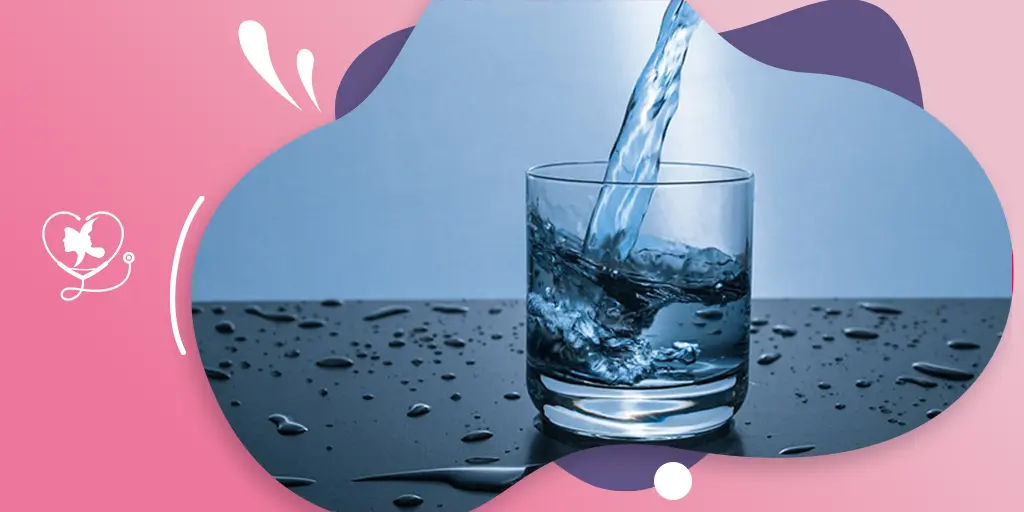We all know that water is essential to good health and many of us are also aware of the fact that water makes 60% of our body. But how do you know if you're getting enough? Have you ever wondered how much water you should drink each day? Most of us need about four to six cups of plain water each day, which is totally doable! But it might be a surprise to hear that the amount of water we need is different for everyone!
It's so interesting how studies have produced different recommendations over the years! But your individual water needs depend on many factors, including your health, how active you are and where you live.
Understanding Daily Water Needs
It's so important to drink enough water every day! There are so many reasons why water is extremely necessary for your body. Some of these include:
- regulating your body temperature
- keeping your joints nice and lubricated
- preventing infections
- delivering nutrients to your cells
- keeping your organs functioning properly.
Plus, being well-hydrated also helps you sleep better, think more clearly, and feel happier!
The recommended daily intake of water for healthy individuals is approximately 15.5 cups for men and 11.5 cups for women. This may be equated to 4 to 6 cups of plain water, with the remainder of your fluid intake derived from other sources, including coffee, tea, fruit juice, fruit and vegetables.
It should be noted that a number of factors can influence the amount of water consumed on a daily basis. These include:
- Physical activities. It is important to drink extra water if you engage in any activity that makes you sweat, in order to replenish the lost fluid and sodium. It is essential to consume water prior to, during and following a workout.
- Environment and temperature. Hot or humid weather can make you sweat and requires additional fluid. Dehydration also can occur at high altitudes.
- Overall health and medications. If you have certain health conditions, such as thyroid disease or kidney, liver, or heart problems, or if you're taking medications that make you retain water, such as nonsteroidal anti-inflammatory drugs (NSAIDs), opiate pain medications, and some antidepressants, you could end up taking in too much water.
- Age. It is a fact that older people do not sense thirst as much as they did when they were younger. This could be a problem if they are taking a medication that causes fluid loss, such as a diuretic.
- Pregnancy and Breastfeeding. If you are pregnant or breastfeeding, you must ensure you drink enough fluids to stay hydrated.
How to Calculate Water Intake
- Weight-based Calculation
The formula for calculating your water intake based on your current weight is very simple and straightforward. The general rule of thumb is that you need 30-40 milliliters of water per kilo of body weight. For example, a person weighing 75 kg would need the following the amount of water:
75 kg * 35 milliliter per kg = 2.6 liters of water
- Activity Level Adjustment
If you are a physically active person and follow a workout routine, you should increase your water intake as your body loses water through sweating. You should add 0.5 – 1 liter of extra water to your normal consumption rate. One important thing to remember is the environment in which you are exercising. You will need to drink more if you train in the sun or in hot weather.
- Climate and Environmental Impact
Individuals living in dry climates are asked to drink more water than those living in normal areas. It is also highly recommended to consume fresh fruits and vegetables throughout the day in order to replenish water and electrolytes naturally.
- Specialized Needs
It is also advisable for pregnant women to watch their fluid intake. The same applies to breastfeeding mothers, whose fluid intake can drop significantly as their babies drain fluid from their breasts.
Other conditions and diseases can cause a large loss of fluid in the body. If you have diarrhea, you lose even more fluid. You also lose salts and minerals such as sodium, chloride, and potassium. These salts and minerals affect the amount of water that remains in your body.
Practical Tips for Staying Hydrated
- Start your day by replenishing fluids in your body.
- Eat food with high water content such as melons, cucumbers, grapes, or tomatoes.
- Check your urine and make sure it is clear or light-colored.
- Compensate for caffeine and alcohol as both are diuretics (stimulate urination)
- Carry a water bottle and refill it as needed during the day.
- Drink before you are thirsty and watch out for headache signs.
- Drink regularly throughout the day and pay attention to temperature.
The Role of Technology in Hydration
Technology can help us achieve our daily hydration goals in many ways: there are apps that tell us when to drink, so we can get the right amount of fluids throughout the day.
There are also some really clever high-tech solutions out there that can help you a lot! It's great to know how much water you should be drinking, but it's even more important to know when to drink. The best way to stay hydrated is to drink at the right time!
Apps and Hydration
The quality of our hydration is being enhanced by an increasing number of applications. When connected with a wellness app, apps such as Samsung Health can provide an accurate balance of the user's needs based on their daily physical activities.
If you're looking for a fun and engaging way to stay hydrated, Plant Nanny is a great choice! This app puts you in charge of caring for a virtual plant whose happiness (and vitality) is proportional to your level of hydration: a great way to teach responsibility in the simplest of gestures!
Smart Water Bottles
In a further development of the sports equipment market, so-called smart bottles are now on the scene. These containers can be synchronized with fitness trackers thanks to compatibility with an app or smartwatch. They can monitor consumption and recommend the most appropriate time to drink using the data available to them. Complete reports showing both the progress of hydration and the nutrients consumed are also obtainable.
Other water bottles utilize LED lighting to encourage water consumption. Fixed lighting indicates the amount already consumed by the athlete while flashing lights accelerate the optimal rhythm to achieve the desired hydration goals. The device also accounts for any liquid leaks. Furthermore, the device provides the coach with information on the athlete's hydration status. The wireless mode enables the coach to monitor the athlete's liquid intake and to alert them directly if there is a need to hydrate more efficiently.






.webp)
.webp)
.webp)
.webp)

